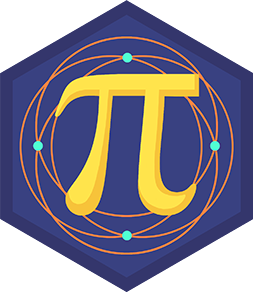Solve this Math Square!
Complete and create a 3x3 math square by arranging numbers so rows, columns, and diagonals share the same sum, exploring strategies.



Step-by-step guide to solve this Math Square
Step 1
Draw a large 3 by 3 square grid on your paper so you have nine equal boxes.
Step 2
Write the numbers 1 2 3 4 5 6 7 8 9 in a column beside your grid so you can use them.
Step 3
Add the numbers 1 through 9 to find 45 and then divide 45 by 3 to find the target row sum 15.
Step 4
Put the number 5 in the center box of your grid.
Step 5
Circle pairs of numbers from your list that add up to 10 (1 and 9 2 and 8 3 and 7 4 and 6).
Step 6
Choose one circled pair and place one of its numbers in any corner box of the grid.
Step 7
Place the other number from that same pair in the corner box directly opposite across the center.
Step 8
Choose a different circled pair and put one of its numbers into one of the two remaining empty corner boxes.
Step 9
Put the matching partner of that pair into the last empty corner box opposite across the center.
Step 10
Choose a third circled pair and place one of its numbers into any empty middle edge box (top middle left middle right middle or bottom middle).
Step 11
Place the partner of that pair in the edge box directly opposite across the center.
Step 12
Put one number from the last circled pair into the last empty middle edge box.
Step 13
Place the final number into the last remaining empty box so every box is filled.
Step 14
Take a photo or write a description and share your finished math square and your best strategy on DIY.org
Final steps
You're almost there! Complete all the steps, bring your creation to life, post it, and conquer the challenge!


Help!?
What can I use if I don't have graph paper or a camera?
If you don't have graph paper, draw the large 3 by 3 square grid by hand on plain paper, write the numbers 1–9 in a column beside it as instructed, and use a phone or tablet to take the photo in the final step.
I'm getting stuck placing numbers opposite across the center — any tips?
To place pairs opposite across the center as the instructions require, mark the center box with 5, lightly draw diagonal lines or a cross through the grid to locate opposite corners and edge boxes, and check each row or column sums to 15 as you place numbers.
How can I change the activity for younger or older kids?
For younger children, simplify by using a 2x2 grid with numbers 1–4 or letting them use colored stickers for the circled pairs, and for older kids increase the challenge with a 4x4 magic square, different target sums, or a timed trial of the 3x3 using the same steps.
How can I make the activity more creative or challenging?
Make it more creative by color-coding each circled pair when you place numbers in the 3 by 3 grid, trying to create multiple valid 3x3 squares, and writing your best strategy to share on DIY.org as the final step.
Watch videos on how to solve this Math Square
A Beginner's Guide to Teaching with Algebra Tiles
Facts about magic squares and number patterns
♻️ If you add the same number to every cell or multiply every entry by the same nonzero number, a magic square stays magic — you just change the magic sum.
🎯 In any 3×3 magic square whose entries are an arithmetic progression, the center cell equals one-third of the magic sum (so it's 5 for 1–9).
🧩 The classic 3×3 magic square using the numbers 1–9 (the Lo Shu) always adds up to 15 in every row, column, and diagonal.
🐢 The Lo Shu legend describes a turtle with a 3×3 pattern on its shell, an ancient Chinese story tied to the magic square.
🔁 There are exactly 8 distinct 1–9 3×3 magic squares — they're all rotations or reflections of the same pattern.
How do you solve a 3x3 math square?
What materials do I need to play Solve this Math Square?
What ages is the 3x3 math square suitable for?
What are the benefits of solving and creating math squares?


One subscription, many ways to play and learn.
Only $6.99 after trial. No credit card required



